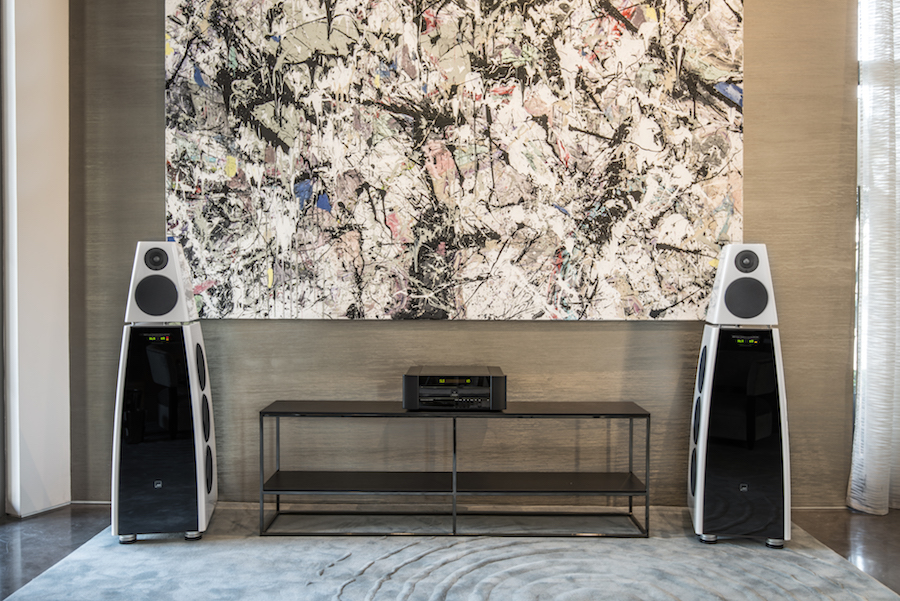The CD is Dead
What to Look for in High-Performance Audio in 2020
Let’s start with a little history. CDs, which have been with us since the early 1980s, ushered in the era of digital audio, replacing vinyl as the dominant source of music distribution. And CDs are still a high-quality audio source, featuring uncompressed full dynamic range sound. In the current world of digital audio, the CD started it all.
But the world has been inexorably moving beyond physical media, both in audio and video. Today a massive amount of music is being consumed over streaming services like Spotify, Apple Music, Amazon Music, and more. It’s difficult to ignore the incredible convenience of dialing up your favorite artists and albums with just a couple of taps on a screen or even a voice command. No CD player can do that.
If there has been a knock on streaming, it’s that the quality has not been up to the level of the venerable CD. Most streaming services use compressed formats like MP3 and AAC, which remove some of the dynamic range of the sound.
But streaming is evolving too. It used to be that if you were a diehard about audio quality, you would eschew streaming for physical media like CDs and vinyl. But audiophiles can rejoice, as higher quality audio is here with all the convenience of downloads and streaming.
If you’re itching to ditch the CD in your high-performance audio system in Lake Mary FL, read on to learn why it’s going to be a great time to do it in 2020 – or even now.
See Also: How to Enjoy High-Performance Audio in Your Outdoor Spaces this Year
Lossless Streaming
If you are a stickler for listening only to the best quality audio, you’ll be happy to know that lossless streaming is going mainstream. One of the pioneers of lossless streaming is Tidal; the Jay-Z-owned music service that boasts a library of 60 million tracks. With Tidal’s Hi-Fi tier, you can get the same lossless CD quality with the convenience of streaming, customized playlists, and never having to fiddle with finding and inserting a CD in the player.
Tidal isn’t the only service going lossless. Qobuz is a French music service that is currently running trials in the U.S., and its Hi-Fi tier streams in the popular FLAC lossless format. Deezer is another French company that has been in the streaming world since 2007, and its Hi-Fi level also offers CD-quality streams.
But perhaps the biggest sign that lossless is going mainstream is Amazon entering the fray. Amazon Music is already a popular service, in no small part because the basic tier is free for Amazon Prime members. The company recently launched Amazon Music HD, a lossless tier that undercuts its rivals on price. With Amazon in the picture, the competition will likely spur Apple Music and Spotify to offer lossless streams in the future.
High-Resolution Audio
The other big trend in high-performance audio is high-resolution audio. Because of the CD’s resilience and compatibility across so many devices and the advent of streaming audio, high-resolution audio for two-channel music has not caught on as quickly as some hoped. Movie soundtracks on Blu-ray in formats like Dolby TrueHD and DTS HD Master have had high-resolution 24bit/192hz audio for some time, and you can hear the difference on a well-mixed soundtrack.
Most of today’s high-performance digital audio equipment is compatible with high-resolution audio. High Resolution (or hi-rez) audio goes beyond the CD in bit depth and dynamic range. In the right setup, the sound quality is truly amazing. Tidal is now offering hi-rez streaming through the MQA format, a special format that makes large hi-rez files smaller for streaming without compressing the dynamic range of the recording. MQA was initially developed by Meridian Audio, a hi-fi audio company with a long history in digital audio.
Hi-rez audio is also available for download purchases through online sources such as HDTracks, Acoustic Sounds, and others. With high-performance audio brands like Marantz and whole-home audio systems from smart automation vendors like Crestron fully capable of playing hi-rez, there’s little reason not to move beyond the CD for better quality sound.
Have we convinced you it’s time to move beyond the CD for high-performance audio? We can tell you much more. Please click here to connect with us and learn more about our audio systems; we look forward to working with you.




